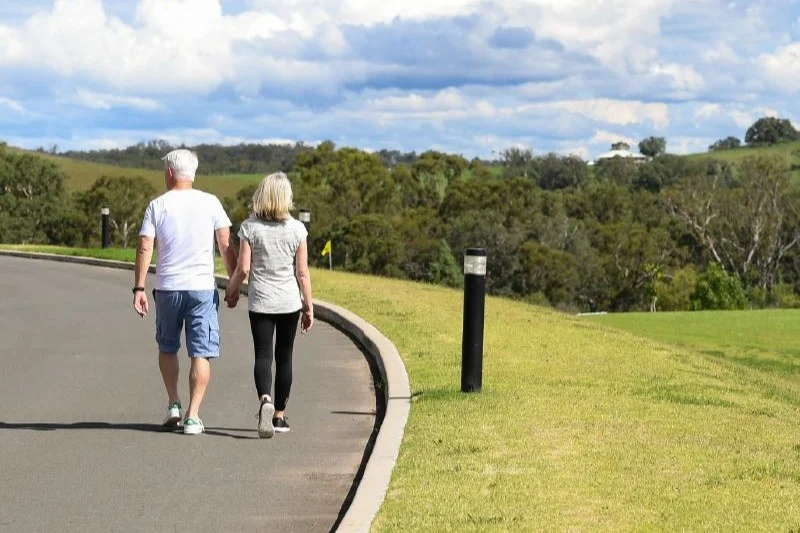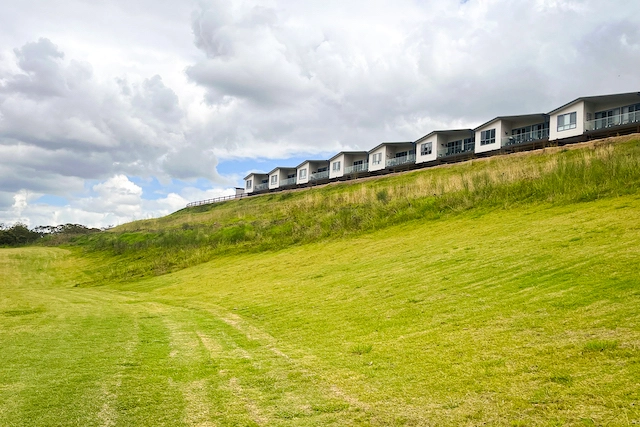

Retirement is an important and exciting stage in life. If you’re looking at downsizing or joining a community of retirees, you have a significant decision to make. Not only from a financial perspective either. Your choice can have a big impact on your health and quality of life.
Thankfully, according to an Age Well Study which surveyed 5000 retirees, people who live in retirement villages report being happier than those that don’t (Age Well, 2019). That is due to factors such as an active community as well as organised daily activities and premium facilities that otherwise wouldn’t be accessible to those not living in a village. This means a much better quality of life than what would otherwise be possible.
But if you’re thinking about moving into a retirement village, it’s important to consider your options and make informed decisions that suit your immediate and long-term needs as well as your budget. Your big move may be a few years down the road or you might be ready to move in the next few months. If a retirement village is where you think you’ll be happiest, knowing which one will be right for you is the next challenge.
That’s why, in this article, we’ll discuss how you can prepare for retirement and compare independent living villages with other forms of retirement housing.
Start by assessing your needs. Both your existing and likely future needs including medical, social and mobility. Not all retirement living options will cater to everyone’s needs. Retirement villages have a variety of care options that differ between each.
For instance, the degree of maintenance and cleaning assistance packages available differ between all villages. You should also consider your pets and if the village is pet friendly. Do they have visiting medical staff and how frequently do they visit? You should also consider the suitability of the village and any mobility concerns you might have for now and into the future.
Firstly, understanding what a retirement village is and the different levels of care or different types of facilities is helpful.
Before we get into retirement villages, it’s good to understand the different types of retirement living options available to you.
In Australia, there are several forms of retirement housing. Some of the most common ones include Independent Living Units (ILUs), villas in a retirement villages with varying levels of support, assisted living facilities, aged care facilities (also known as nursing homes), and home care packages.
Each form of retirement housing has its own unique features and benefits, and it is important to consider your individual needs and circumstances when choosing the best option for you.
These are self-contained units, often apartments or villas, that are specifically designed for people over 55 years of age. They provide a low-maintenance lifestyle and offer amenities such as swimming pools, community centres, and landscaped gardens.
Independent living units are designed for seniors who want to maintain their independence but still have access to basic support services when they are needed.
The terms Retirement Villages and Independent living villages or Independent living units are often used interchangeably.
Retirement villages refer to communities of small homes, apartments, or units that are exclusively for over 55s. They usually offer a range of services, such as meals, transport, and home maintenance, as well as recreational and social activities. Some also offer a range of facilities for residents use such as golf courses, pools, and gyms to name a few.
An over 55s lifestyle community is similar to a retirement village and often these two descriptions refer to the same thing. That is, over 55s communities are residential communities or housing estates that are exclusively for over 55s retirees. Generally, they are designed for adults that can live mostly independently, taking care of themselves or, if necessary, with some home care agency assistance.
Assisted living facilities provide a range of support services for seniors who need help with daily activities such as bathing, dressing, and medication management. These facilities typically have staff on hand 24/7 to provide assistance and support.
Nursing homes provide a higher level of care for seniors who are unable to live at home and require constant medical attention and support. These facilities have medical staff on hand 24/7 and provide a range of medical services and support, including rehabilitation and therapy, meals, nursing care, and help with daily activities such as bathing, dressing, and taking medications.
These are government-funded packages that provide support services for seniors who are still living in their own homes, but need assistance with daily activities.
Where assisted living and nursing homes may be a better choice for seniors who require more support with daily activities and medical care, moving to an independent living retirement village is an excellent option for those who want to maintain their independence and social connections but still have access to support services and amenities.
One of the great benefits of retirement villages is that many people stay in their village homes for a large portion of their retirement. This is because a good retirement village will cater to varying needs as they change through retirement years.
Research into retirement community living by Grant Thornton (Grant Thornton, National Overview of the Retirement Living Sector, 2014) found that living in a retirement village can delay a person’s need to enter a nursing home or aged care facility by more than 5 years. This is because retirement villages normally cater better to ageing residents with things like fewer stairs, easy access facilities and features in the home to support reduced mobility. Residents in villages are also happier and feel less isolated. With isolation being the cause of depression for 1 in 5 retirees, this means significantly improved mental well-being.
Retirement villages also tend to make living an active lifestyle more accessible. They can do this by;
What to look for in a retirement village will be dependent on your desired lifestyle and budget. But the following are some good questions to ask and things to consider when you tour villages.
If you want to live in a village with an active community, one with more facilities than you can poke a stick at, and a calendar of daily events bursting at the seams, Mount Gilead Estate could be for you.
Mount Gilead Estate is also a retirement village that will meet your changing needs as you age. The location is stunning, with plenty of wide open space, not to mention generously sized homes and only a 10-minute drive from Macarthur shopping centre.
We’d love to take you on a tour and introduce you to some of our residents to hear directly from them about what it’s like living here.
Get in contact with us to arrange an inspection.Visit Mount Gilead Estate to see what your retirement could look like. Tour the village to see our resort-style retirement facilities.
Complete the form with your details and preferred tour times or any questions you have and a member of our sales team will be in touch.
Copyright © 2025 Mount Gilead Estate | Powered by Mount Gilead Estate
